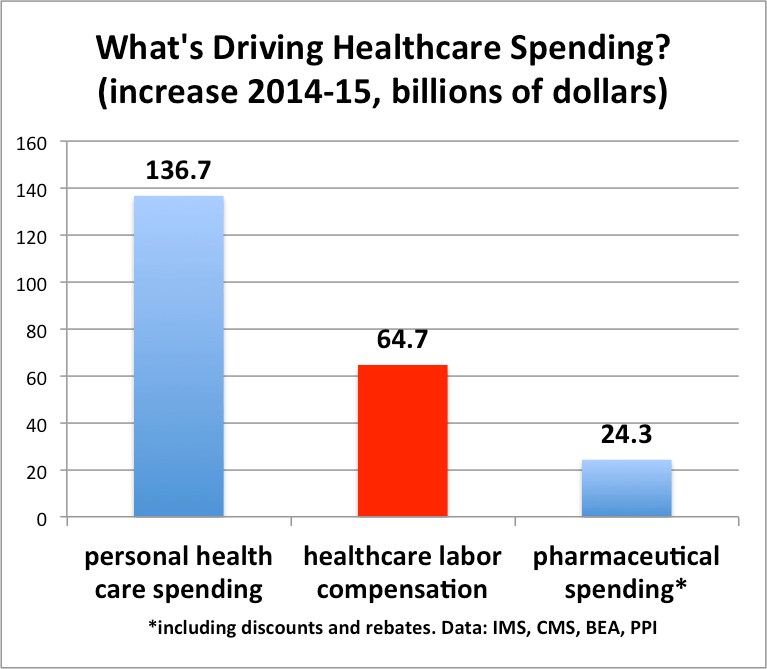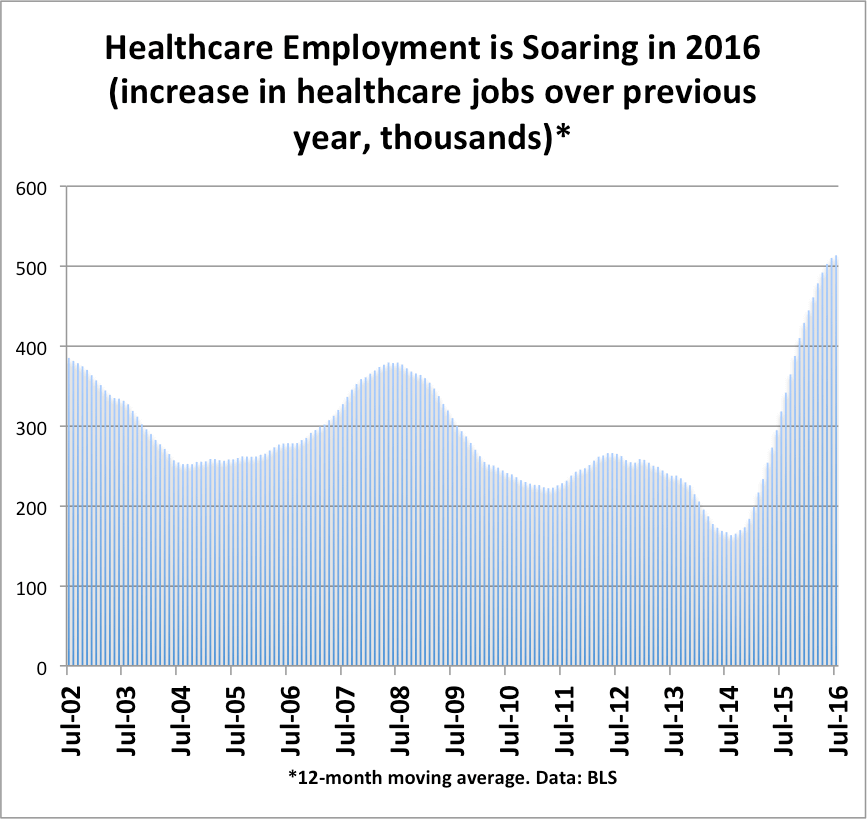Suppose you were counselling your college-age child about what fields to consider. Where would you tell them to start?
The short answer: Tech and health. Just look at the numbers: Since 2007, when the current tech boom started, employment in computer and mathematical occupations–including software developers and network administrators–has grown by more than 900,000 jobs. Employment in healthcare occupations–including physicians, nurses, skilled medical technicians, and support occupations–has risen by almost 1.9 million jobs. Everything else: Zilch.
That’s why it was a bit strange to read today’s WSJ piece, entitled “America’s Dazzling Tech Boom Has a Downside: Not Enough Jobs”. The gist of the article is summed up in the lede:
The technology revolution has delivered Google searches, Facebook friends, iPhone apps, Twitter rants and shopping for almost anything on Amazon, all in the past decade and a half.
What it hasn’t delivered are many jobs.
Here’s my problem with their conclusion: The authors restricted themselves to looking at employment at tech companies, and tech industries as defined by the BLS. That makes sense if we think about tech like it was a manufacturing industry, where the jobs are concentrated in factories that can be easily tracked by government statisticians.
However, a large number of jobs created by the tech boom are outside the tech industry, and indeed, outside the conventional tech hubs. Instead, many people working in IT are in mining, transportation, government, finance, education, media, healthcare, and retail. The tech boom has spread across the entire economy, lifting employment far from Silicon Valley.
Some of these computer and mathematical occupation jobs are related to the App Economy, which we have discussed elsewhere. Indeed, creating and maintaining mobile apps has become a significant source of employment for the US and other countries. This includes ensuring the cyber security of mobile apps, which is increasingly important for banks and other companies that are worried about being hacked. These jobs are only going to grow.
Here’s a chart that puts job growth into three buckets: computer and mathematical occupations; healthcare practitioner, technical, and support occupations; and all other occupations. We see that since 2000, computer and mathematical occupations are up 32%, and healthcare occupations are up 47%. Everything else? Only a 5% gain.
What if we start from 2007, when the current tech boom really took off, propelled by Apple’s introduction of the iPhone and the mobile revolution? Since 2007, employment computer and mathematical occupations is up 27%, and jobs in healthcare occupations is up 18%. Meanwhile, the rest of the economy has produced no net new jobs at all.

So, of course that number is heavily influenced by the job losses in maufacturing production workers. What if we just focus on managers? Even there, the growth has been much faster in tech and health. Since 2007, the number of computer and information systems managers is up 40%. The number of medical and health services managers is up 19%. For all other types of managers, the growth is only 8%, or only 1% per year.
Now, there are all sorts of reasons to worry if these trends will continue. The tech boom could come to an end, pressures on health care costs could slow job growth. But at least for now, if your kid is looking for growth sectors, tech and health are the name of the game.





